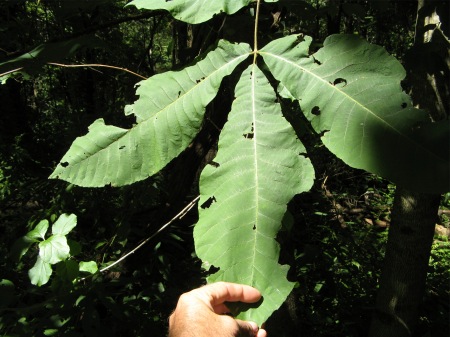Cucumber Tree
Shortly after buying my property, I went out to Rocky Knob on the Blue Ridge Parkway and bought a copy of Trees & Shrubs of Virginia, by Gupton and Swope. While browsing through it, I noticed an entry for a “cucumber tree”. “Wow, that’s a funny name for a tree,” I thought. This trip, I found one. The cucumber tree (magnolia acuminata), can grow to a height of over 100 feet in ideal forest conditions. Obviously, this one is nowhere near that height, but if there is a small one that I can reach to take photographs of the leaves, then there must be some larger ones nearby, wouldn’t you think? I was astonished at the size of the leaf, associating large leaves with the tropics, not with Virginia. The tree gets its name from the shape and color of the fruit, which resembles a cucumber. It is also known as a blue magnolia or cucumber magnolia.

I bought my property because it is south-facing (I want to incorporate passive solar in my house design) and was told, early on, that the parcel would be drier and have less diversity than a north-facing parcel. As I identify the trees and shrubs on the property, I am continually amazed that the guides that I consult say that the trees I am finding grow best in rich, moist woodlands, typically north- or east- facing. Very interesting. It doesn’t hurt that the parcels on either side of mine are higher and thus drain into mine, but I’m also wondering if there isn’t a spring 10′ or more underground that is contributing moisture to the soil.

Comments
Cucumber Tree — No Comments
HTML tags allowed in your comment: <a href="" title=""> <abbr title=""> <acronym title=""> <b> <blockquote cite=""> <cite> <code> <del datetime=""> <em> <i> <q cite=""> <s> <strike> <strong>